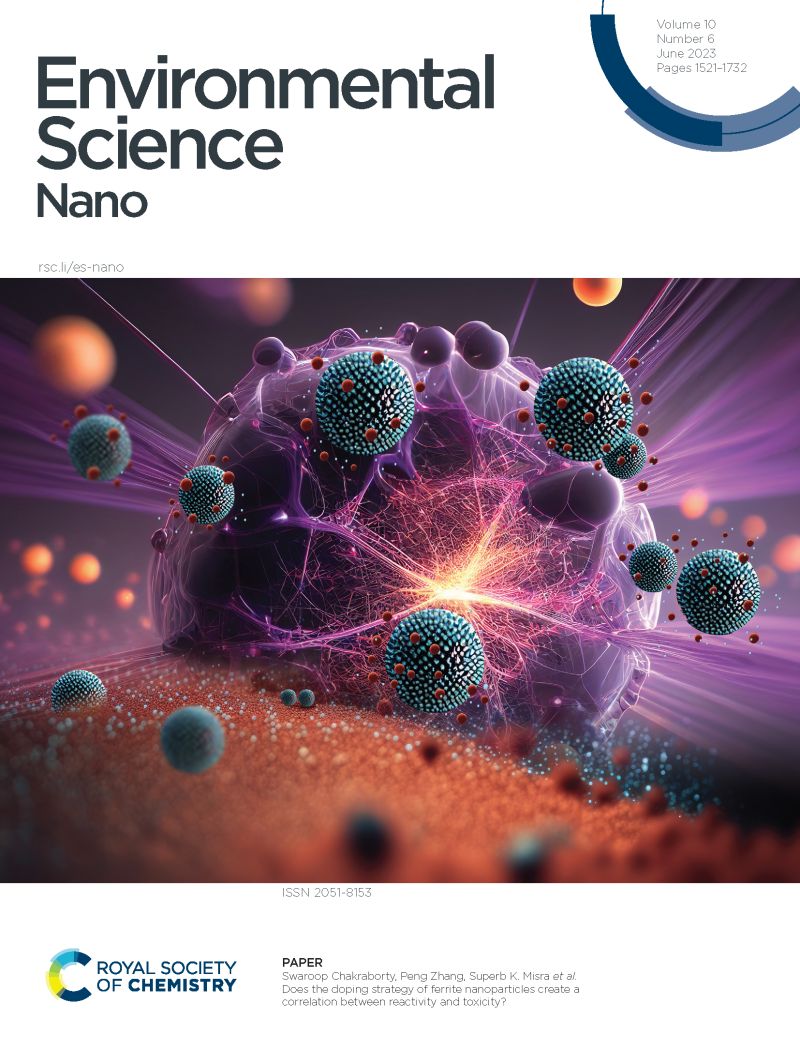Detection of Amoxicillin by Lead Ferrite-Based Electrochemical Sensor
IF 5.1
2区 环境科学与生态学
Q1 CHEMISTRY, MULTIDISCIPLINARY
引用次数: 0
Abstract
Objective: The proposed study aims to develop an electrochemical sensor for quantifying amoxicillin (AMX) antibiotic using a lead ferrite nanoparticles-modified glassy carbon electrode (PbFe12O19-NPs/GCE). Methods: The PbFe12O19-NPs were synthesized by the sol-gel method. The synthesized PbFe12O19-NPs were characterized by spectroscopic techniques and employed to develop an electrochemical sensor (PbFe12O19-NPs/GCE). The PbFe12O19-NPs/GCE-based electrochemical characterization was accomplished by cyclic voltammetry (CV). Results: The characterization of PbFe12O19-NPs confirmed its hexagonal phase with rough morphology. The electrochemical characterization revealed the diffusion behaviour of PbFe12O19-NPs/GCE. PbFe12O19-NPs/GCE was applied for electrochemical detection of AMX in a dynamic range of 0.005 to 215 µM (R2 = 0.99) with a detection limit of 1.64 nM. The sensor was successfully applied to the analysis of biological and industrial/tap water samples, with recovery rates of 95.1 to 98.3%. Conclusion: The excellent performance of the developed electrochemical method confirms that it can be successfully applied for the routine analysis of AMX in different sample matrices.基于铅铁氧体的电化学传感器检测阿莫西林
目的:利用铁酸铅纳米粒子修饰的玻碳电极(PbFe12O19-NPs/GCE)开发一种用于阿莫西林(AMX)抗生素定量的电化学传感器。方法:采用溶胶-凝胶法制备PbFe12O19-NPs。利用光谱技术对合成的PbFe12O19-NPs进行了表征,并用于制备电化学传感器(PbFe12O19-NPs/GCE)。采用循环伏安法(CV)对PbFe12O19-NPs/ gce进行了电化学表征。结果:PbFe12O19-NPs的表征证实其为六方相,形貌粗糙。电化学表征揭示了PbFe12O19-NPs/GCE的扩散行为。采用PbFe12O19-NPs/GCE在0.005 ~ 215µM动态范围内(R2 = 0.99)检测AMX,检出限为1.64 nM。该传感器成功地应用于生物和工业/自来水样品的分析,回收率为95.1 ~ 98.3%。结论:所建立的电化学方法具有优良的性能,可成功地应用于不同样品基质中AMX的常规分析。
本文章由计算机程序翻译,如有差异,请以英文原文为准。
求助全文
约1分钟内获得全文
求助全文
来源期刊

Environmental Science: Nano
CHEMISTRY, MULTIDISCIPLINARY-ENVIRONMENTAL SCIENCES
CiteScore
12.20
自引率
5.50%
发文量
290
审稿时长
2.1 months
期刊介绍:
Environmental Science: Nano serves as a comprehensive and high-impact peer-reviewed source of information on the design and demonstration of engineered nanomaterials for environment-based applications. It also covers the interactions between engineered, natural, and incidental nanomaterials with biological and environmental systems. This scope includes, but is not limited to, the following topic areas:
Novel nanomaterial-based applications for water, air, soil, food, and energy sustainability
Nanomaterial interactions with biological systems and nanotoxicology
Environmental fate, reactivity, and transformations of nanoscale materials
Nanoscale processes in the environment
Sustainable nanotechnology including rational nanomaterial design, life cycle assessment, risk/benefit analysis
 求助内容:
求助内容: 应助结果提醒方式:
应助结果提醒方式:


